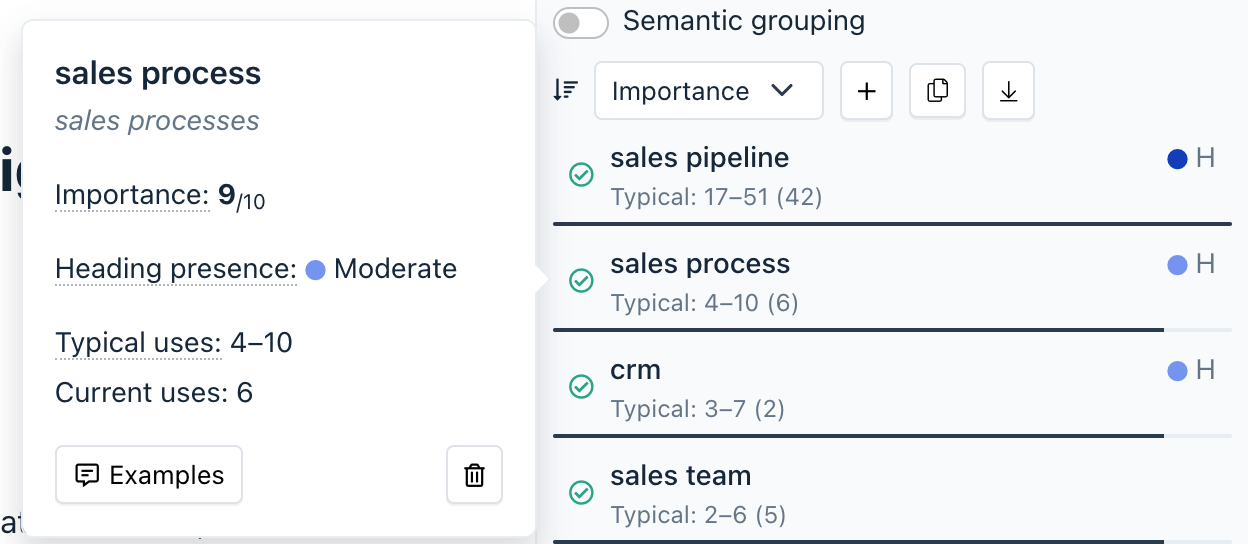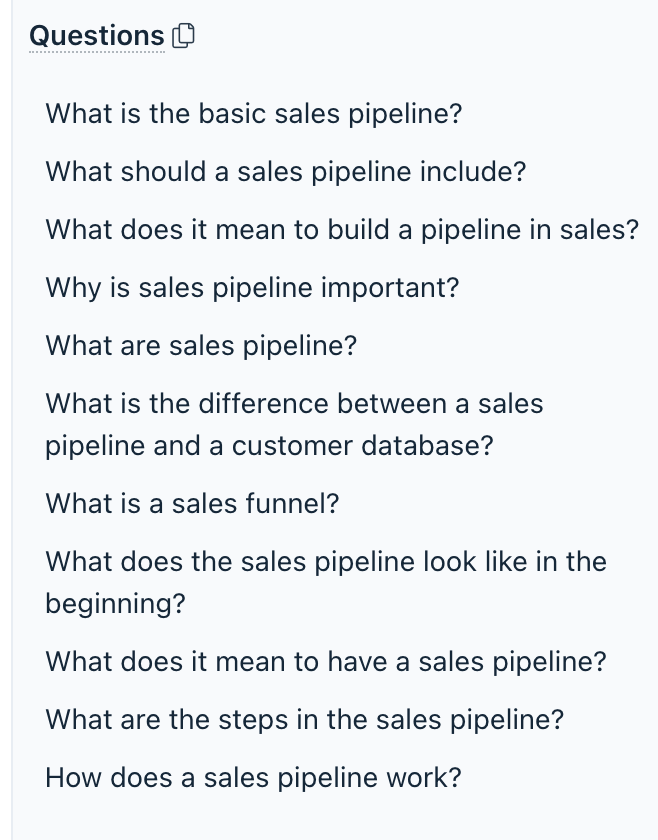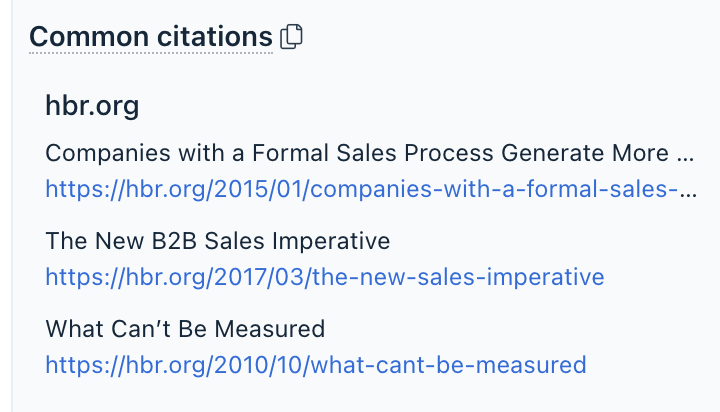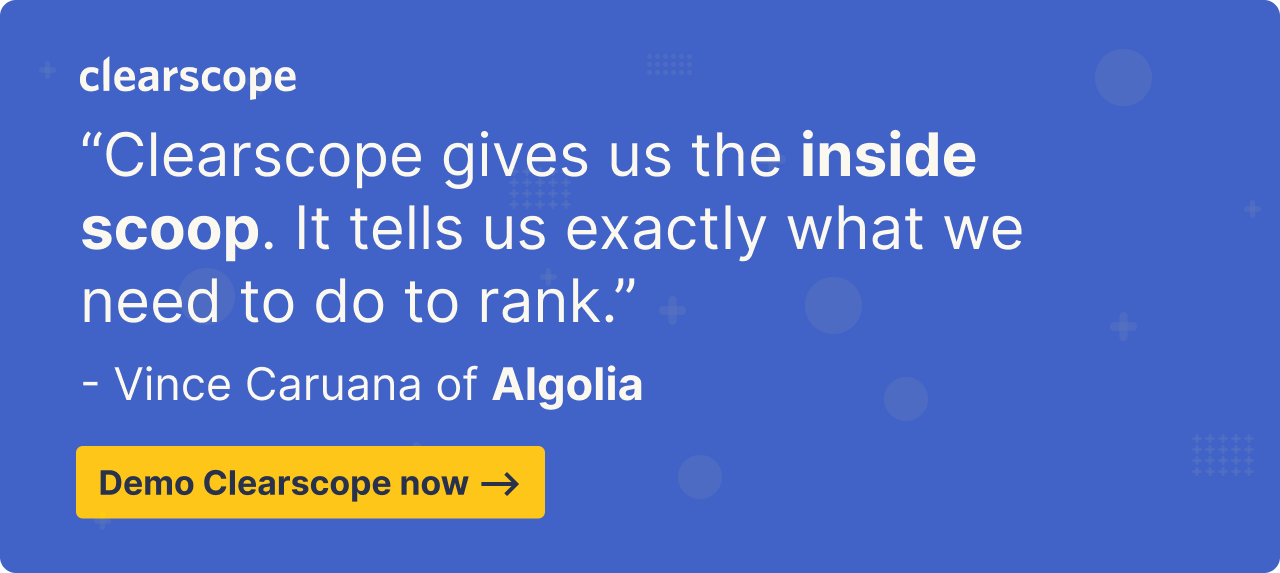
Table of Contents
Join our newsletter
Get access to trusted SEO education from the industry's best and brightest.
Digital marketers believe their team needs more help understanding and improving their use of search engine optimization (SEO).
Their confusion is understandable.
Google’s algorithm is constantly evolving with near-monthly updates. Best practices change year to year.
It isn’t easy to know where to invest your time and money. And more importantly, who to trust and look to for advice.
But one ranking factor has stayed consistent — content quality.
Optimizing your content is one of the best ways to generate long-term sustainable SEO results.
Spend the next 11-ish minutes here with us, and we’ll guide you through SEO-friendly content.
We’ll start by looking at why it’s an essential part of any marketing plan. Then we’ll go over ten ways to optimize your content for search engines.
Let’s get into it.
Note: Clearscope is our product. We’re proud of what we’ve built and believe we have the best content optimization and monitoring platform on the market. Request a personalized demo.
What is SEO content?
Content SEO refers to the practice of developing content that helps your website rank higher on search engines like Google. The process involves writing high-quality content for human readers and adding structural elements that provide context for search engines.
The goal of writing SEO content is to attract more organic search traffic to your website instead of relying on paid advertising methods, such as pay-per-click (PPC).
SEO content does two things well.
First, it provides an excellent user experience by answering a searcher’s questions thoroughly and in an easy-to-digest way. Second, it gives Google’s search engine crawlers enough context so the algorithm can match the piece with the right keyword searches.
SEO content plays a significant role in the broader strategy of content marketing.
According to Semrush’s State of Content Marketing 2022 Report, the most critical content success metrics in 2021 were organic traffic (51%) and search engine rankings (42%). SEO drives both of those.
Why is content optimization important?
Content optimization is important because it helps search engines and potential customers find your website and build a relationship with your brand. A well-executed content optimization strategy can build brand awareness, drive traffic to your website, and generate more leads.
Let’s face it.
You can write great content all day, but it’s not going to matter unless people can find it. If you’re investing time and money into content marketing, you want to ensure you’re taking all the right steps to make your pieces discoverable.
Search engines can be an excellent source of traffic to your website, but there’s a lot of competition.
Optimizing your content will help you stand out from your competitors and increase your return on investment (ROI).
First Page Sage’s study of SEO ROI stats found that taking a thought leadership approach to your SEO content generates an average ROI of 748%. While the average SEO content approach only has a 16% ROI.
The thought leadership approach involves demonstrating your brand’s expertise and providing value to new readers by doing in-depth keyword research focused on the target audience’s pain points and user intent to create high-quality content compared to the competition.
In contrast, the average keyword research approach only looks at surface-level information such as search volume and difficulty.
So, how do you ensure you’re writing the best type of content?
Here are ten content tips to add to your SEO strategy to improve discoverability with readers and search engines.
10 SEO content tips
Start every piece with search intent
Use strategic keyword placement
Write thorough content
Cover related topics and themes
Optimize images
Make your structure reader-friendly
Link to high-quality external sources
Leverage internal links
Write enticing meta descriptions
Focus on readability
1. Start every piece with search intent
Understanding a user’s search intent should be the starting point every time you create new content for SEO.
According to Google Search Central, “Google's automated ranking systems are designed to present helpful, reliable information that's primarily created to benefit people.”
Ultimately, you can’t help or benefit people unless you know what they’re looking for in the first place. In other words, you need to know their search intent.
Once you have a primary keyword, ask yourself, “What is the goal of the person who's searching for this term?”
In general, search intent can be broken down into four categories:
Navigational: Their goal is to go to a certain website page.
Informational: Their goal is to know more about a topic.
Transactional: Their goal is to complete an action.
Commercial: Their goal is to research a purpose.

Narrowing down your search intent during the keyword research phase helps with the other steps on this list. In particular, it helps you find related topics, write thorough content, and pick the best content structure.
2. Use strategic keyword placement
Using your primary and related keywords in the content you write helps Google associate your domain with the right search queries. But oversaturating your posts with keywords can negatively affect the reader experience, especially if the rest of the content is low-quality.
This practice, known as keyword stuffing, became so prevalent that Google officially listed it as one of its spam policies. Websites that violate the search engine’s spam policies can rank lower or even be removed from search results.
Regarding keyword placement and usage, we recommend always putting the user experience first instead of catering to an algorithm.
You still want to use keywords you discovered in your research — but only include them where they make sense and sound natural.
Clearscope’s content optimization feature provides a range for each keyword that helps ensure you’re using them enough but not too much.

The same rule applies to grammatically awkward keywords and search terms.
Don’t force them just to check something off your list. Instead, adjust the keyword so it reads like natural language, and search engines will easily understand it.
At present, it’s still helpful to use your target keyword when writing SEO content, strategically placing them in:
The meta description
Image alt tags
Subheadings
Title tags
This practice helps search engine crawlers understand what your page is about and lets your content appear in relevant search results.
Keep in mind that this best practice may change as the algorithm evolves, but using exact match keywords in specific signal areas can’t hurt (as long as they still make sense for a human reader).
3. Write thorough content
Google’s search engine aims to give people helpful and reliable content that “provides interesting information beyond the obvious” and “substantial value when compared to other pages in search results.”
What does that mean for SEO writers?
You can’t get away with the bare minimum. Instead, you should aim to cover topics in-depth, provide complete answers to reader questions, and be more beneficial compared to the competition.

Clearscope lets you see common user questions and even use semantic grouping for keywords so you can identify opportunities to build more depth in each piece of content.
4. Cover related topics and themes
Another aspect of writing comprehensive content involves discussing the topics and themes related to your primary keyword. Think of it as anticipating your reader’s needs by identifying subjects relevant to their intent.
Clearscope uses real-time data and artificial intelligence (AI) to identify related topics and themes for each keyword you optimize and suggests relevant keywords.
Let’s say someone searches for the term “sales pipeline stages,” which is a keyword with informational intent. First, you want to write a complete answer to their search.
Then, you can go to the Research tab on Clearscope and see that there are several related themes, including “stages”, “sales pipeline management”, “leads”, “sales process”, and “CRM”.

By covering the relationship between coworking spaces and productivity, flexibility, or costs in your article, you can be even more helpful to your readers and stand out from the competition.
You can take this idea even further by creating pieces that address the related topics. For instance, you could write articles about productivity at work, tips for networking, and flexible work options.
Over time, this practice helps you build topical authority, which is similar to branding, but in the context of search engines. The more breadth and depth you have in your content strategy, the easier it will be for search engines to start associating your domain with your target keywords.
5. Optimize images
For SEO purposes, the word “content” doesn’t just refer to the words on the page. It involves the entire user experience, including images and media. Adding images and graphics is an excellent way to improve the reader experience.
Specifically, strategically adding images helps you:
Visually break up large blocks of text
Re-engage the reader’s attention
Illustrate complicated processes
Cater to different learning styles
Summarize key ideas
What do we mean by strategic? In short, it means placing images where they make sense and add value.
To ensure that you’re improving content quality (and not adding elements that could distract), make sure to place images near relevant text. For instance, if you’re talking about a particular software feature, you can include a screenshot image showing the tool in action.
Images can also improve your piece’s uniqueness and help you stand out from the competition if you use custom graphics instead of just stock photos.
Custom graphics can include:
Data visualization charts
Annotated screenshots
Process illustrations
Infographics
Those types of unique images don’t just improve your post’s user experience — they also give you the opportunity to build brand visibility on Google Images.
Finally, you can include specific keywords in the image description and alt text to help provide more context for search engines. Just make sure that your alt text is also useful for accessibility features like screen readers.
6. Make your structure reader-friendly
Google has made it clear that SEO marketers should prioritize human readers over search engine crawlers. But there’s more than one type of reader online.
Some people go to Google to find quick answers, while others want a deep dive on the search keyword. As a content creator, it’s your job to find a balance between answering a question immediately and covering a topic thoroughly.
Here’s the good news:
You can achieve both — using proper structure.
Now, while you want your content, ideas, and visuals to be unique, there’s something to be said about using familiar structures. Content structures set expectations for your readers and give them clues about what they’ll find in your article and where.
Examples of well-established structures include:
Compare and contrast: Clearscope vs MarketMuse vs Surfer: A Detailed Comparison
Problem and solution: Core Web Vitals: The Most Common Issues and How to Overcome Them
Cause and effect: Why Local SEO is the Key to Business Success
Description: What Is Pagerank in SEO, and Why Does it Matter?
Chronological: Google Algorithm Update History
Structures help your readers (and search engine crawlers) understand how the different parts of your post relate to one another and suggest where they can find certain information.
For instance, if someone clicks on an article titled “Why Your Email Open Rates Are Low and How To Improve Them,” that’s a problem and solution article. The reader can expect to learn more about the problem first and find solutions toward the end of the post.
When you use a specific content structure, make it clear in your title so you set expectations from the start.
7. Link to high-quality external sources
Trust is an essential element of SEO success — you have to build credibility with readers and search engine algorithms. Connecting your domain to other authoritative webpages through links is one way to establish trust.
In other words, you prove your credibility by showing you’ve done the research and citing your sources. The more credible your sources are, the better.
As part of Google’s #AskGoogleWebmasters series, John Mueller points out, “Linking to other websites is a great way to add value to your users. Links help users find out more and check out your sources.”
With Clearscope, you can easily find relevant sources for your target keyword by going to Common Citations on the Research tab. Here you’ll see frequently used links grouped by the source domain.

8. Leverage internal links
Internal links are hyperlinks in your content that take readers to another page on your domain. They’re important for SEO because they help readers navigate your website, find more useful content, and get to know your brand.
Let’s take a closer look at the four main benefits of internal links:
Navigation: Lets users easily move through your post or website
Discovery: Shows readers content and products they didn’t know about before
Trust building: Establishes credibility by showing the depth of your knowledge and content
Action: Moves people through the sales funnel by facilitating the next step, such as learning more, subscribing, or making a purchase
If your content creation process doesn’t include an internal link building strategy, you’re missing out on some valuable opportunities to build relationships with potential customers.
Adding internal links also helps you out with search engines by providing information about your website’s hierarchy and making it easier to discover your content depth.
Angela Skane from Terakeet reminds marketers to think about how to “provide [readers] with the most valuable information that fits their needs” rather than “overwhelming them” with too many internal links.
In other words, if you stuff your content with internal links, it’s going to look spammy. The bottom line is always the user’s experience.
9. Write enticing meta descriptions
Each listing in Google’s search engine results pages (SERPs) has a summary description that the search engine automatically pulls from your page. You can use the meta description tag to have more control over how your post appears in search results.
Google will use your meta description tag as the snippet if the description you’ve written gives more accurate information than text scraped from your page.
Your snippet has two primary jobs: to tell readers what the page is about and entice them to click your link. It functions as your call to action on a SERP.

Each of your pages should have a different description. In other words, this isn’t the place to copy and paste boilerplate text about your brand. Instead, it’s your chance to tell readers that your page is the one that has the answers they want so you can improve your click-through rate.
When writing your descriptions, summarize your piece while highlighting the most relevant information for readers. That goes back to understanding search intent. For instance, if someone searches for a “how to” keyword, your description can mention that the page has a step-by-step process.
Finally, use natural language for your meta descriptions. Google may be using that as part of its search results, but you’re ultimately trying to get a human reader to click through to your page.
10. Focus on readability
Since 2015, Google has been using AI in its search algorithm to process text more like human readers.
By 2022, there’s been enough progress with natural language processing (NLP) that Google released the helpful content update, which is an effort to reward websites that create a user-friendly reading experience.
The algorithm update stresses that content creators write for humans first instead of optimizing for search engines. The idea is that the algorithm will catch up to the human experience.
One way to improve your reader’s experience is by focusing on readability. In other words, writing content that’s consumable and easy to understand.
Here are some tips you can use to make content more readable:
Shorten sentences
Break up long paragraphs
Use contractions and simpler words
Avoid industry jargon, especially if the terms aren’t keywords
Clearscope’s content editor tool automatically calculates your readability in real-time using the Flesch reading ease formula that scores your piece based on scholastic reading levels.
There’s no hard and fast rule about the best readability score for SEO.
Ultimately, you should tailor your writing to your audience and their intent. For instance, college-level writing may be appropriate for an audience of technical experts, but it wouldn’t be as accessible for beginners.

In Clearscope, each keyword report comes with a suggested readability level (based on the top-ranking articles), so you can tailor each of your pieces accordingly.
Using content SEO tools
One of the challenges of optimizing content for search engines is keeping up with changes in search, whether that’s shifts in user intent or updates to Google’s algorithm.
Using a content optimization tool like Clearscope ensures you have the most up-to-date information during the content writing process.
Content optimization software bases its recommendations on the articles that are currently ranking for your target keyword, so you always have a good idea of what your competition is doing.
Not to mention, Clearscope also has a content inventory feature that keeps track of your existing content and sends notifications when something needs to be updated.

Final thoughts: Your ultimate guide to SEO content optimization
Optimizing your content for search engines is one of the most effective ways to improve your website’s visibility, drive more organic traffic, and generate viable leads for your business.
The good news is that Google is continuing to update its algorithm to find the pieces that provide the best experience for readers. So, you don’t have to choose between writing for potential customers or for search engines.
If you implement these ten content tips into your SEO marketing strategy, you’ll be able to set yourself apart from the rest of the competition on Google and improve conversions to your website.
If you’re ready to take your content SEO to the next level, explore Clearscope today for AI-powered tools that take the guesswork out of the creation process.





